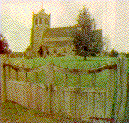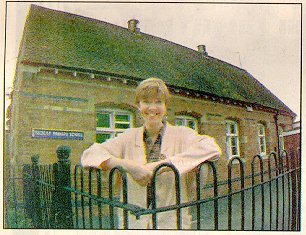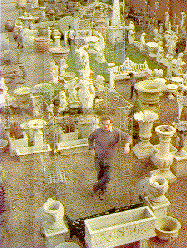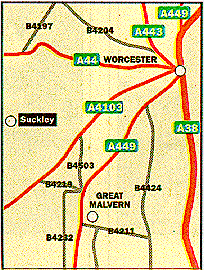The ancient village of Suckley gets visitors on the internet, says Ross Reyburn
![[Picture of Suckley Hop Kilns]](hopkilns.gif)
Tradition: The village's old hop houses and kilns, set against the backdrop of the Suckley Hills.
| SATURDAY November 16 1996 | The Birmingham Post |
|
A village that's on line to the future
The ancient village of Suckley gets visitors on the internet, says Ross Reyburn |
![[Picture of Suckley Hop Kilns]](hopkilns.gif)
Tradition: The village's old hop houses and kilns, set against the backdrop of the Suckley Hills. |

|
Keith Bramich, the son of the village postmaster, is responsible for
this curious state of affairs as he put Suckley on the Internet, the
computer service with more than 30 million users world-wide.
"It seemed an interesting thing to do to give the village a bit more publicity," says Mr. Bramich, a computer consultant working in Basingstoke, Hampshire. "There is about a megabyte of information, a lot of photographs and a sound file of the church clock chiming. "It's not the bog-standard Westminster chime. |
|
Suckley is really a village without a true centre. Its two pubs,
The Nelson, which majors on food and the game of skittles, and
the Cross Keys, an old-fashioned drinkers' haunt, are at different
ends of the parish.
The church is perched on high ground. Behind the church is the successful Victorian village school where head teacher Mrs. Jill Shepherd and two other full-time teachers look after 67 children. But although the village hall is not far away, the area lacks the feel of a village centre. The village post office and shop are in a completely different location at Longley Green on the edge of the parish. |

Tuition: Headmistress Jill Shepherd outside Suckley School where, with two other full-time staff, she teaches 67 children. |
|
By the village church at Lower Court Farm, other village hop kilns
are filled with eye-catching sets of cane furniture in the showrooms
of Holloways.
This family business, selling up-market conservatory interiors and garden ornaments, opened in 1991. "They advertise in The Lady, " was the reverential comment of one villager. Edward Holloway, who runs the firm with his wife Diana and his mother-in-law Mrs Vivienne Sheward, regards the venture as an example of the way farmers have to adapt to survive. "People in the countryside have to be flexible otherwise everything just becomes a dormitory," says Mr Holloway, who also runs the family farm. "Some of the suites we do are our own - we have collaborated with designers. "We find people are looking for something a bit different and it is because of that they come to Suckley." The family hop business closed due to a combination of market forces and hop-wilt disease. A short drive away at Upper Court is one of the surviving Suckley farms producing hops. |

Ambition: Entrepreneur Mr Edward Holloway among his garden ornaments. |

|
FACT FILE
|
|
The above article has been re-published here on the Suckley Village Web Site with the permission of Ross Reyburn and the Birmingham Post.